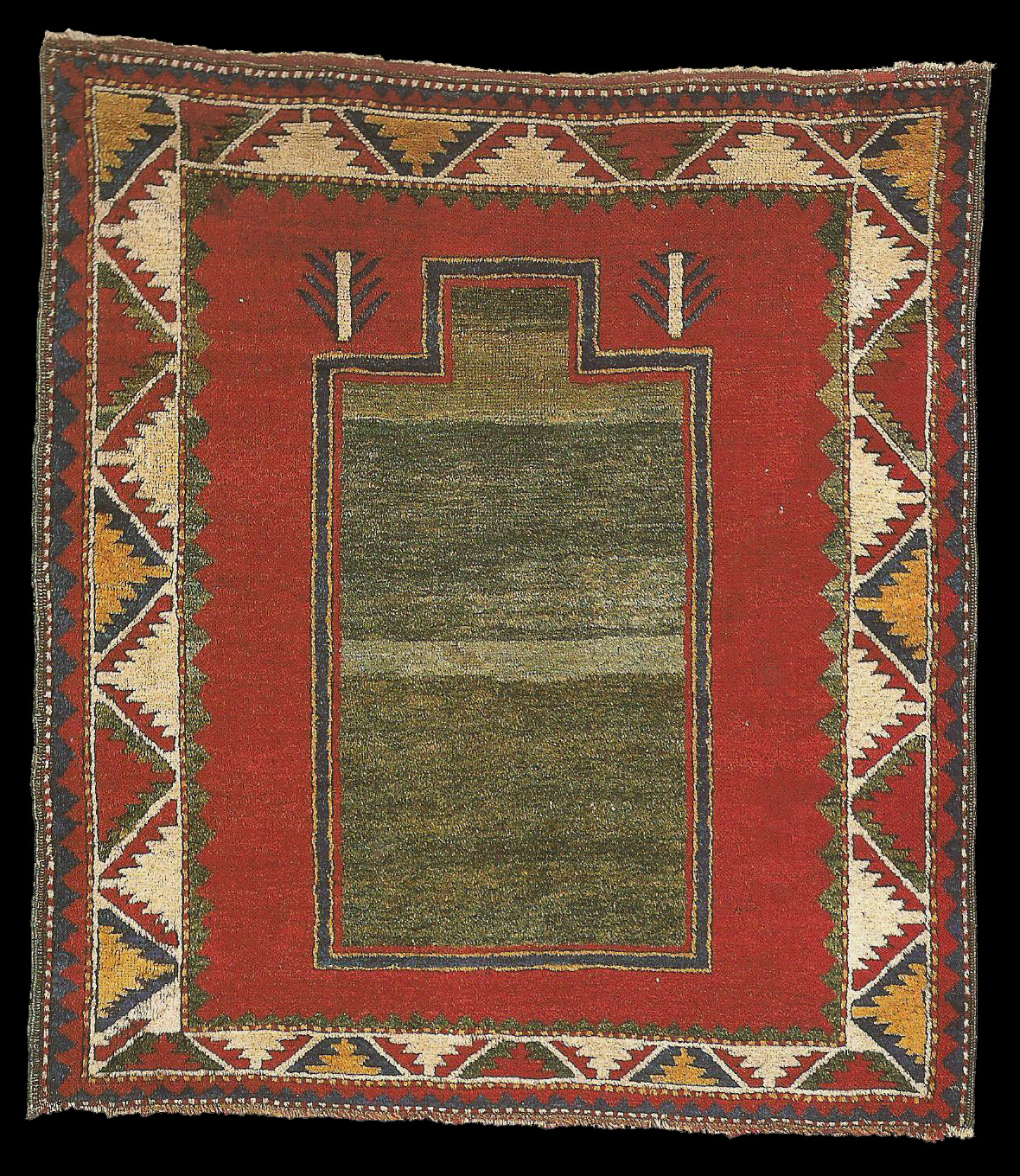|
The price for this rug at Rippon Boswell in 1992 ($49 015) is one of the
highest auction prices on record for a 19th century Caucasian prayer rg,
exlipsing the $33 492 paid at Philips, London for a Fachralo prayer rug (Hali
50 p 166)
This is an extraordinary rug. Its stark, 'minimalist' look is extremely
unusual and is one reason why the rug has fetched such a high price at
auction. Described by Detlef Maltzahn in the auction catalogue notes as
'one of the rarest remaining prayer carpets', the rug's tremendous impact
comes from its perfectly balanced design and pure, saturated colours. The
green praying area, which stands on a bare red background, is strongly
delineated and extremely simple in conception; Maltzahn likens it to a
window which opens onto another world. The pronounced abrash of this
'window' helps create an illusion of three-dimensional depth. Anatolian
inspiration is evident in the rug's design, as is its architectural
relationship to a small group of prayer rugs (featuring 'bug' medallions
within the mihrab) attributed to Lori-Pambak. Maltzahn has attributed the
rug to the Fachralo area.
Variations in color tonality generally in the ground colour of the field,
which result from the weaver's use of wool dyed in small batches with
minor differences in color depth.
 |

